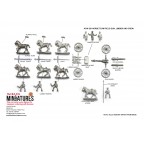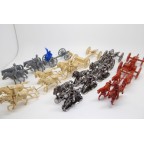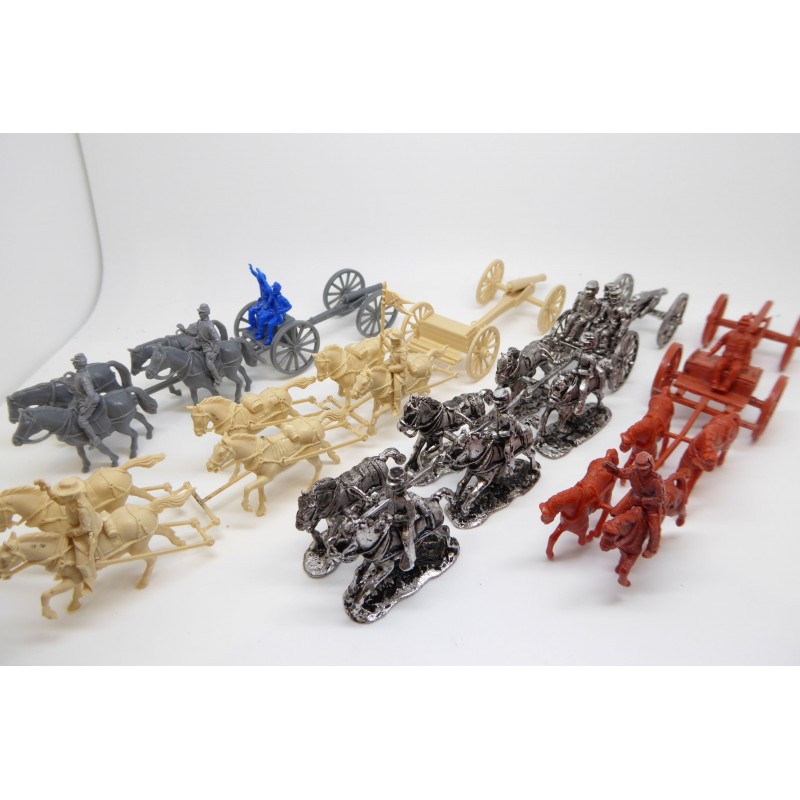This product is sold as a kit and is unpainted. A hard copy Instruction Sheet is provided with the kit.
Additional Images.
1. Instruction Sheet.
2. The kit can be painted as a Union or Confederate gun and team. This image shows Confederate gunners rushing to the front line!
3. This model was originally made for use as a display item in the Harrow Model Shop. It was painted by Stuart Asquith. Thank you to John Cunningham for providing the picture from his collection.
4. Comparison with plastic 1:72 gun and limber team. From left to right: Imex, Italeri, Jacklex and Airfix. It shows just how compatible the Jacklex team is with equivalent plastic models.
5. Comparison with plastic 1:72 limbers. From left to right: Italeri, Imex, Jacklex and Airfix.
6. Comparison with plastic 1:72 horse and rider. From left to right: Airfix, Imex, Jacklex, Italeri.
CIVIL WAR ARTILLERY
A Civil War artillery battery at full regulation strength, including all horse holders, drivers, and other specialised functions, exceeded 100 officers and men. US regulations prescribed a captain as battery commander, lieutenants as section commanders and detachments consisting of a field piece, limber, caisson and crew of eight cannoneers, six drivers, gunner and chief of piece. Each limber was dawn by a six-horse team. Due to a lack of horses the Confederate army very often only used four. With spare horses included, a typical Union six-gun battery had more horses than officers and men. Depending on terrain, artillery regulations called for a 14 yard space between guns. However at Malvern Hill on 1 July 1862 the Union guns were virtually hub to hub. When deployed the horses faced to the front with six yards between the lead limber horse and the trail of the field piece, and eleven yards between the caisson limber team and gun limber. On the march a detachment took up 30 yards of road and a six gun battery 180-200 yards in ideal conditions.
For transporting the cannon, the no. 2 carriage was joined to a two-wheeled limber by means of an iron ring (lunette) and iron pin (pintle). The limber carried an ammunition chest that contained fifty rounds of 6-pounder, thirty-two rounds of 12-pounder, or various quantities of fixed or semi-fixed ammunition depending on the cannons in the battery. In addition , friction primers and fuses were to be found in the chest, and the limber itself was a means of carrying the tar bucket, canvas water buckets and large tarpaulin.
'Cannons, An Introduction to Civil War Artillery', Dean S Thomas, Thomas Publications, 1985.
'EP Alexander and the Artillery Action in the Peach Orchard', RL Murray, Benedum Books, 2000
Jacklex Miniatures 20mm American Civil War metal wargame figures.






%20ACW%20Field%20Gun%20and%20Team-144x144.JPG)





%20ACW%20Field%20Gun%20and%20Team-800x800.JPG)




-270x270.jpg)



